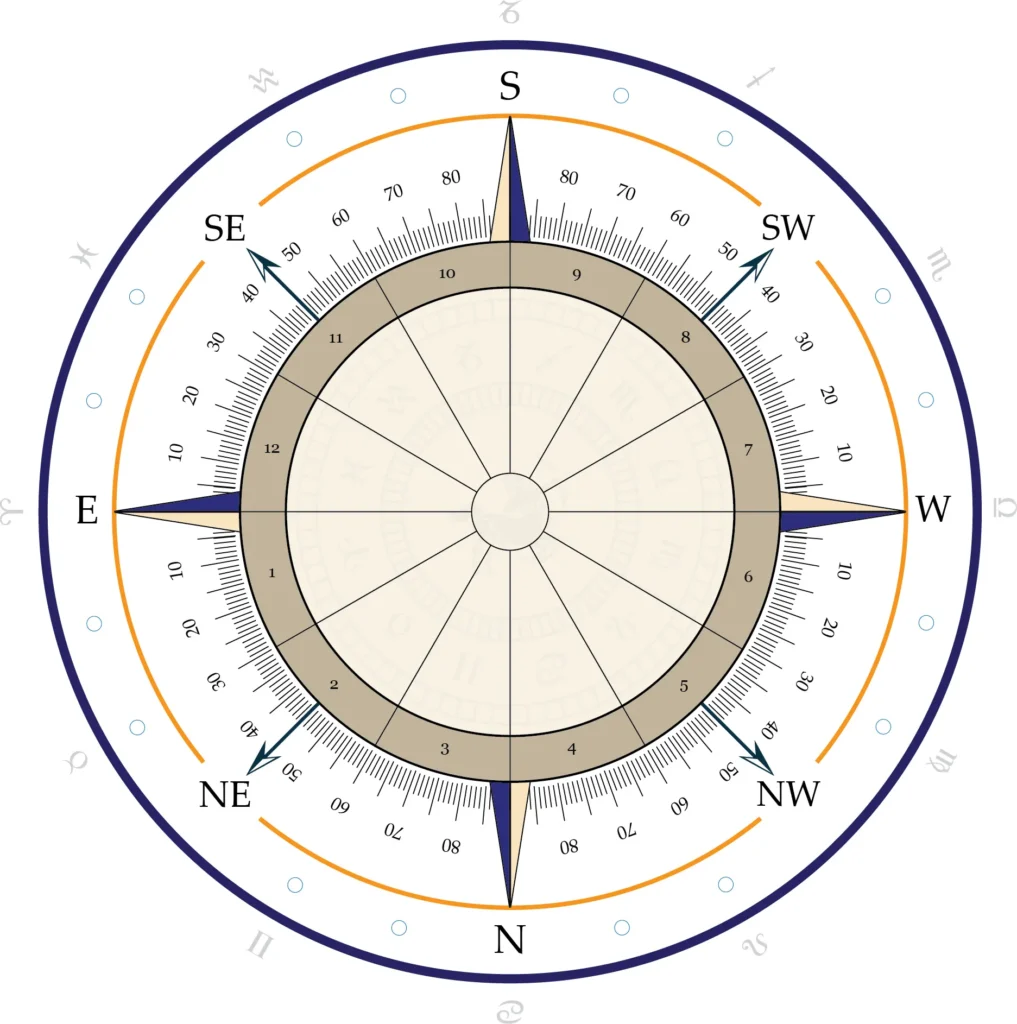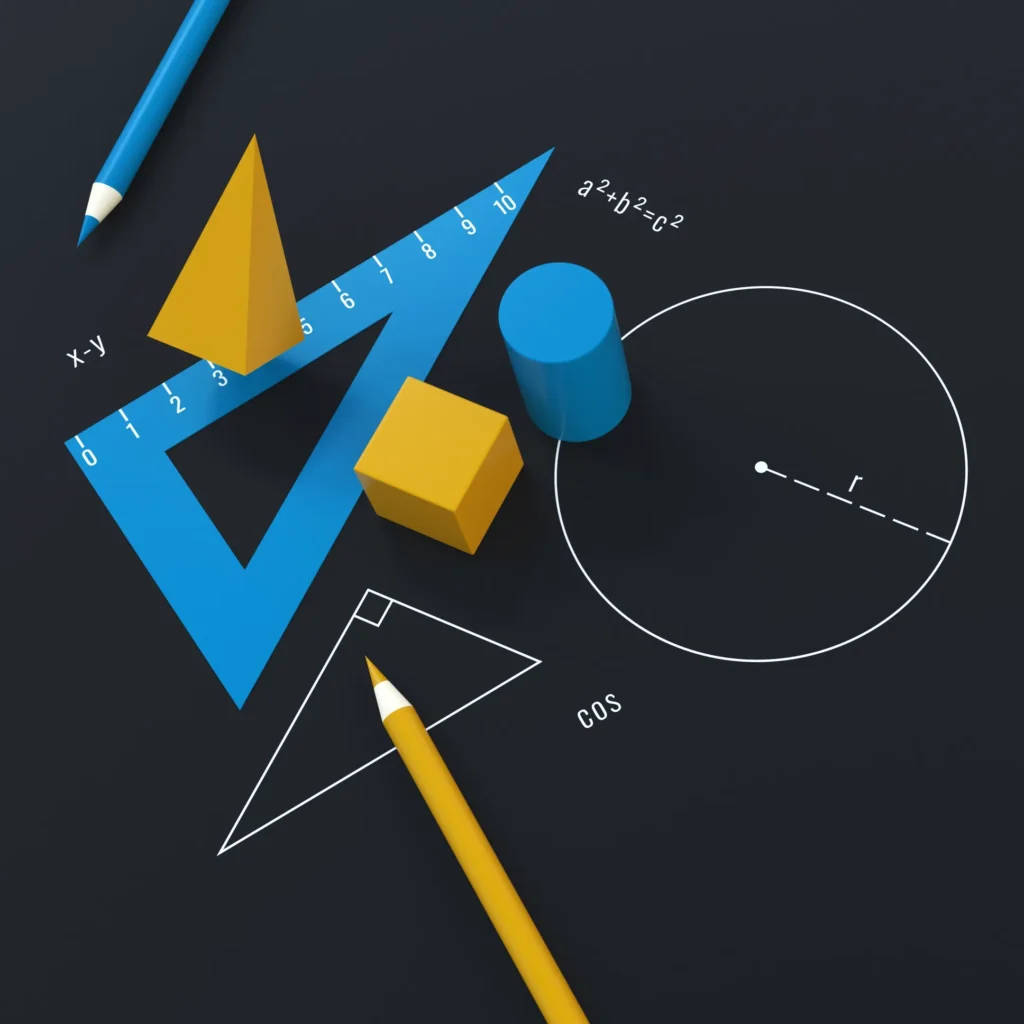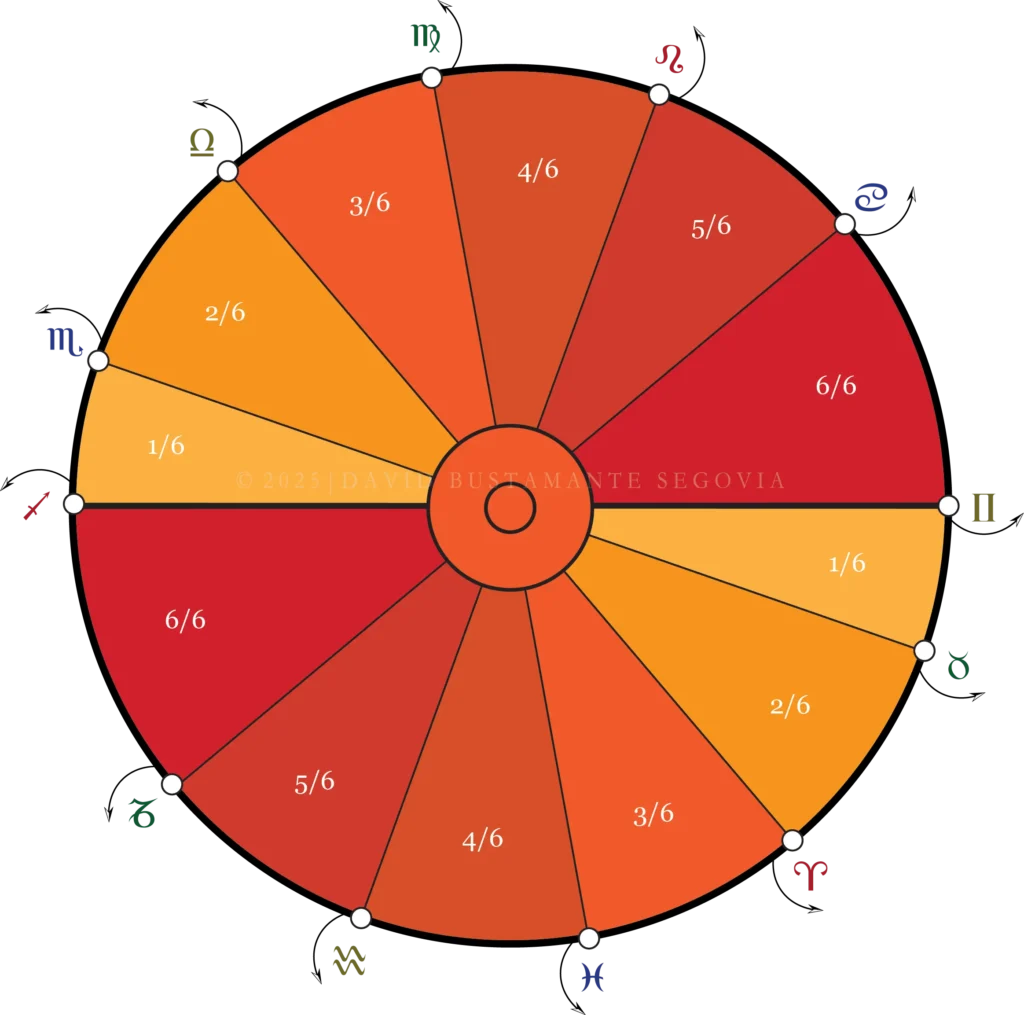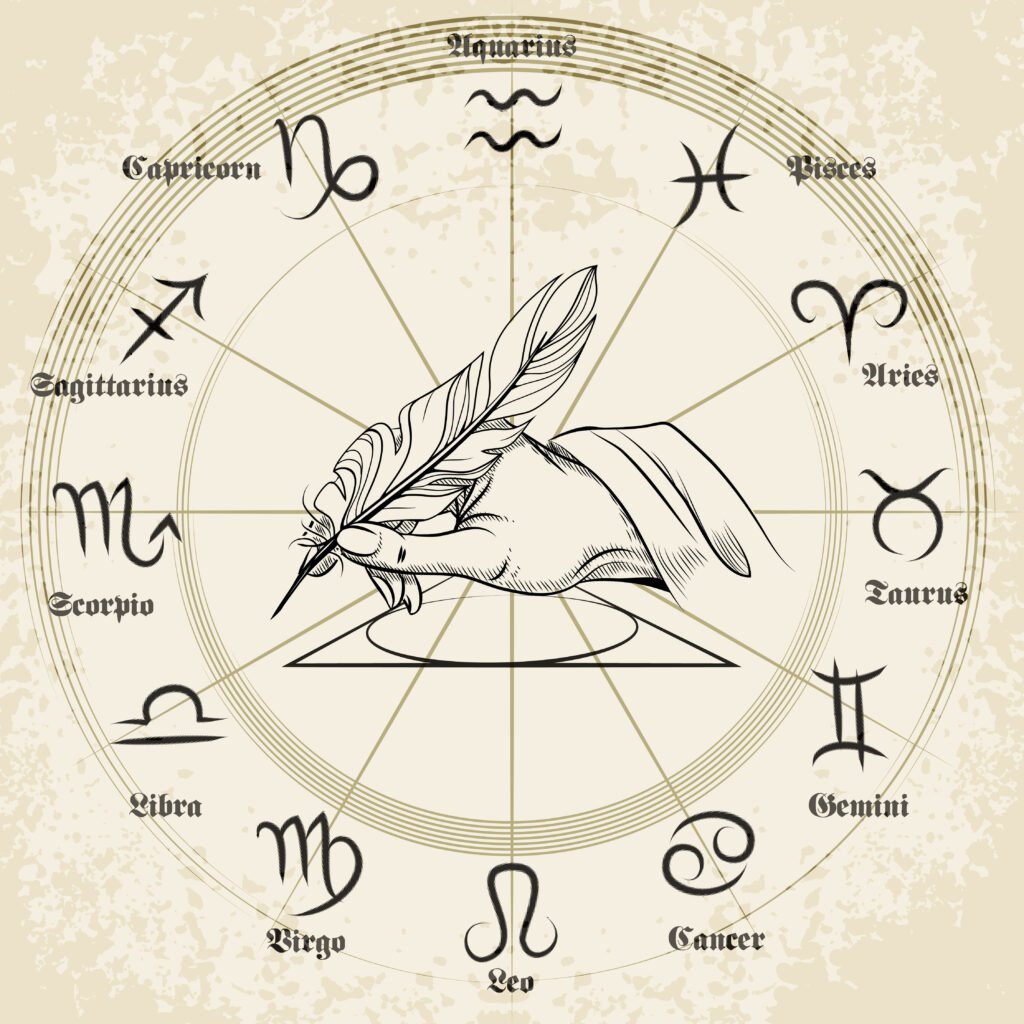
Quantum indeterminacy in Morin de Villefranche?
Introduction
Is it possible for a 17th century astrologer to, somehow, be aware of what physicists today regard as «quantum indeterminacy»? Moreover, is it possible for astrological interpretation to also be governed by this apparently necessary incompleteness in the description of a physical system (which, in the case of astrological delineation, would refer to the description of the effect of a specific placement)? It would certainly drive some astrologers crazy because of its implications. All the more if they categorically believe in fate.
We know that matter is made up of elements, elements of molecules, and molecules of atoms. Beyond the atoms are the particles (e.g., electrons, protons, photons) and, beyond these, presumably even less perceptible vibrational states that quantum physics has called “strings” or “filaments”. Analyses here are much more complex as matter becomes much more abstract and its behaviour much less predictable. While classical physics maintains that the state of any system is determined by the sum of all the values of its measurable properties, and vice versa, quantum mechanics, for its part, maintains that the state of a system ― or of some systems ― will not be either one or the other until observed and measured, meaning its state depends on the time of observation.
Say again?
Quantum mechanics point out that you cannot predict with certainty whether a radioactive atom will decay within a specified period of time (even with complete knowledge of the laws of physics and the initial conditions of the atom in question), but only calculate the probability of one of several possibilities, that is, one of all possible periods (Aaronson, 2014). Quantum indeterminacy is then characterized by an apparent necessary incompleteness in the description of a physical system, as it consists of a probability distribution in the set of results that emerges from the measurements of the observable (Harrigan; Spekkens, 2010).

Electron wave function in a hydrogen atom at different energy levels. Quantum mechanics cannot predict the exact location of a particle in space, only the probability of finding it at different locations. The brighter areas represent a higher probability of finding the electron. Source: Forinash, Kyle. Hydrogen W Simulation. Indiana University Southeast. Retrieved on 2008-12-18. (English language Wikipedia.)
When we talk about indeterminacy, we are not talking about errors in measurement leading to indeterminate or random results, but rather a characteristic inherent to said state, level, or plane of matter in general. Albert Einstein, even though a precursor of quantum physics himself (after having demonstrated the quantum nature of light in 1905), experienced serious problems with this notion. For Einstein, everything was necessarily predetermined. It was not until 1999 that physicist and pioneer of teleportation Anton Zeilinger (University of Vienna) and his team were able to prove otherwise in the Canary Islands experiment. [1] Is it possible that the distinguished astrologer Morin de Villefranche was somehow aware of this in the 17th century?
Morin de Villefranche (Book XIX, Astrologia Gallica)
The fundamental principle of quantum mechanics according to which indeterminacy is fundamental, intrinsic, or inherent to the observable is something that Morin de Villefranche seems to have suspected or was clear on when in Book XIX of his Astrologia Gallica (1661) he laid the Definitions, the Postulates, the Axioms and Theorems of the discipline. He pointed out:
- Français: “Une planète ne signifie un chose qu’en tant qu’elle l’effectue.”
- Spanish: “Un planeta no significa una cosa en tanto no la produzca.”
- English: “A planet does not signify one thing except insofar as it brings it about.”
If such an assertion does not represent the fundamental principle of quantum mechanics (whether or not he was aware of it), I then do not know what could, because it evokes, specifically, its essence, the one according to which it is not possible to exactly know the properties of an observable until it is observed and measured.
The assertion is or could be so problematic for our practise that I was recently contacted by a colleague about it, who asked if I was able to understand. Had I not incurred physical studies such as electromagnetism, molecular physics, and quantum entanglement during the last years, I would have said that I too could not understand. With or without said knowledge, however, it is true ― and it is certainly worth knowing early in our practise ― that any placement (e.g. Saturn in Pisces) is necessarily common to tens of thousands of people, even in the same astrological House, which is why it will only be the interpreter’s intuition and synthetic skill ― to compose all the pieces of the puzzle that make up the chart ― that will make it possible to establish a reasonably accurate diagnosis or prognosis [2]. Now, Morin’s assertion touches a sensitive point in the world of phenomena.
It is not about a strategy or manipulation on the part of the astrologer to excuse himself if what was predicted did not work out or did not occur as described, but rather, precisely, a property or characteristic inherent to reality, which is not exhausted at the molecular level of matter but that goes beyond it (we may call it subatomic, quantum, metaphysical, or spiritual). During the interpretative exercise, once we have complied with a non-linear procedure (astrosynthesis), and regardless of the effect that we have been able to infer or intuit, it is also necessary to know that said effect will not be such as long as it does not occur because of both quantum indeterminacy (?) and epigenetics (Greek epi, as in “beyond” the genetic code): one same DNA can present different expressions depending on the environmental stimuli to which the individual is exposed, from diet and weather to education and behavioural patterns or models in general depending on the culture (country) in which it develops.

Probabilities distribution. Source: Fields, Douglas. Lecture 40. 3-D Potentials and Hydrogen Atoms. Physics 2310-01. Spring, 2020.
Arab astrologers such as Sahl and Mashallah, as well as Ezra (later, Dr. Weiss and Henri Selva, also Sepharial) would make recurring references to the environment (e.g. hot weather of Ethiopia, among them) while building and setting forth their aphorisms. See our Commentary on Astrology According to Epigenetics here.
This field of genetics (i.e. epigenetics) studies how exogenous variables can modify the way in which an organism interprets DNA instructions without that implying or meaning to say that it can produce a genetic mutation, which, in astrological language, explains how environmental stimuli can modify the way in which the individual behaves in relation to his own chart (without that implying astrographic changes). The astrologer, therefore, will only be able to account for the most probable way in which the individual will be, say, do, or act, which is nothing more than to speak of tendencies or of probability distribution only, never of categorical fates (as the nature of reality, as described by non-classical physics, would not allow for speaking in these terms). It is much like attempting to predict the weather. Because the number of variables at play are so great, prediction or exact prediction is particularly difficult. However, the more variables are taken into account or consideration, the less off and/or the more accurate our judgements.
Spanish astrologer Demetrio Santos (considered the greatest scientific astrologer of the 20th century) also seems to have alluded to either the same or a similar notion when he advises, in a brief explanation of the evolution of man in light of a technique he developed (C-60): “What is meant by a planet or aspect, when the C-60 transits over it, is not possible to interpret correctly but [only] when the corresponding age has been exceeded, that is, when the subject has experienced all possible aspects.” [3] Why could not the effect be accurately inferred but only when it has already occurred, according to Santos? Is there, here also, an allusion to the quantum nature of the matter, that is, to the fact that we cannot speak of the exactness of the facts but only of the exactness of periods, tendencies, or probabilities? In which case, again, it continues to resemble nonexact factual scientific disciplines such as meteorology, forensic psychology, medicine, and psychiatry.

Here is a possible illustration for the different moments at which an event inferred by the interpreter can occur, highlighting the most probable moment depending on the region of the chart the planet occupies (or on whatever timing technique is employed by the delineator). Source: Freepik.com
Free will?
The foregoing then forces us to infer the existence or validity of free will, even if in a relatively small margin, but each time wider the more aware we make the individual of their tendencies, the same as going or not to the doctor or psychologist to improve our health or behaviour, whatever the case, even when we know that nature (DNA or birthchart) will always play a major or dominant role in our lives. It is precisely what Spanish poet and writer Calderón de la Barca explains through King Basilio in La vida es sueño: “[…] because the most elusive fate, the most violent inclination, the most impious planet, only inclines will, does not force the will.” (pp. 108-109). Thus, the king confesses to us that he will appoint his son Sigismund against all predictions of the wise because he had “disproved in full the fate which about him so many things said.”
Although the debate on free will and determinism ― which for centuries has racked the brains of both philosophers and scientists, especially geneticists ― warrants a much deeper or more extensive essay, we can say, for the time being, that while classical physics is a friend of determinism (because it works only or mostly on the model or continuum we know as spacetime), quantum physics of free will (because it works with the most abstract or subatomic states of matter). Astrology, for its part, could or should be friends with both notions, establishing, perhaps, the corresponding margins of determinism and free will, as genetics has recently speculated after having realised that DNA is not as simple as Mendel had described it in 1865, giving rise thereby to the consideration of the environment and its influence. Hence the expression that can be coined: “Genotypes [DNA] we know [or can determine]; phenotypes [expression] we do not know [or cannot determine as of yet]”, because it will depend upon the stimuli to which the individual will be exposed in a given environment. [4] Or, as Morin de Villefranche would say… “a placement will not signify one thing except insofar as it brings it about.”
_______________
[1] Although the quantum entanglement phenomenon cannot yet be fully explained, its possibility has been confirmed. It was found that what Einstein had called “spooky action at a distance” was possible, that is. For Einstein, even if it were true that two apparently unrelated particles (due to millions of light-years of distance between them) can have the same or correlated properties once observed and measured, it is because they already had (predetermined) properties that we did not know about, which later led to the development of the Hidden-variables theory. However, the phenomenon that even he did not conceive possible was proven. Astrology’s mechanism of action could well rest here: the reason for the correspondence between planets and the affairs that they govern or rule, regardless of their distance from Earth. Quantum entanglement suggests that this variable (distance) is irrelevant and, if so, we could have a physical explanation for the hermetic maxim that reads: “As above, so below; as it is inside, so also outside.” Theoretical physicists are sure that, when it comes to entanglement, it is necessary to consider both particles or observables as a single entity, not as two independent entities. It is precisely this notion of unity that is difficult for us to elucidate due to the existing distance between the two; in short, which challenges not only common sense but also realism, that which characterises our very understanding of reality or of the phenomenological world in general.
[2] I have recently submitted an article to The Mountain Astrologer entitled “The Astrological Delineation Procedure”, where I defend the need to assess multiple variables simultaneously, unlike what the aforementioned principle poses as possible (i.e. that can be measured separately only, always at the expense of the others). Although it is true that it is necessary to conduct a linear or rational procedure first, as Morin insisted also (i.e., assess first the sign of the cusp, then its ruler, then the guests, if any, etc.), so is the fact that, after a linear procedure, a non-linear but simultaneous one is to take place. Dr. Weiss baptized this as “synthesis” (1926) and Zoltan Mason translated it as “astrosynthesis” (1979). Because the “brain” is necessarily a quantum organ (otherwise what we call “thought” would not generate electromagnetic activity or electromagnetic activity would not be made up of thoughts), this is possible for us to conduct.
[3] Retrieved from: https://temasdeastrologia.blogspot.com/2015/04/el-ciclo-de-60-anos.html
[4] Under normal circumstances, that is, outside the field of epigenetics, it would clearly be vice versa: “Phenotypes we see [v. gr. eye and hair colour], genotypes we don’t know [but can know after a genetic analysis].”








